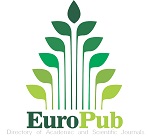The Role of Morphological Processing In Brain: The Good Inflection and Bad Compounding
Abstract
There is considerable behavioral evidence that morphologically complex words such as ‘tax-able’ and ‘kiss-es’ are processed and represented combinatorially. In other words, they are decomposed into their constituents ‘tax’ and ‘-able’ during comprehension (reading or listening), and producing them might also involve one the espot combination of these constituents (especially for inflections). However, despite increasing amount of neurocognitive research, the neural mechanisms underlying these processes are still not fully understood. The purpose of this critical review is to offer a comprehensive overview on the state-of-the-art of the research on the neural mechanisms of morphological processing. In order to take into account all types of complex words, we include findings on inflected, derived, and compound words presented both visually and aurally. More specifically, we cover a wide range of electro- and magnetoencephalography (EEG and MEG, respectively) as well as structural/functional magnetic resonance imaging (s/fMRI) studies that focus on morphological processing. We present the findings with respect to the temporal course and localization of morphologically complex word processing. We summarize the observed findings, their interpretations with respect to current psycholinguistic models, and discuss methodological approaches as well as their possible limitations.
Keywords- Morphological Processing, Brain, Good inflection, Bad Compounding











